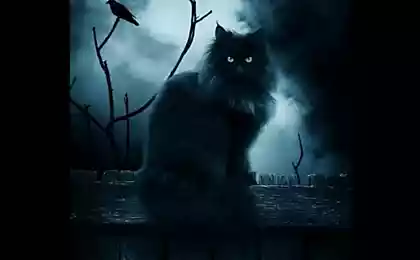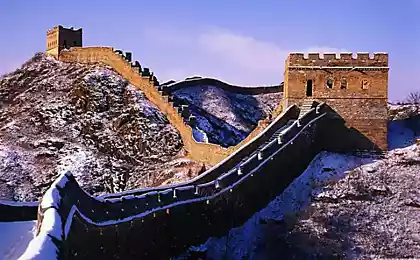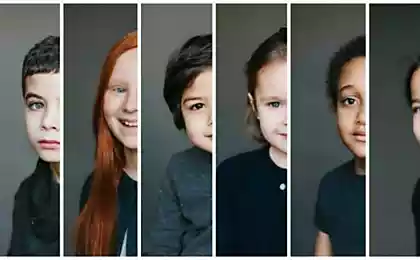747
Great Russian Wall
Everyone knows about the Great Wall of China. And few know that it was his counterpart in Russia: Large Zasechnaya (or Belgorod-Simbirskaya) feature, built in the 1630s, and is often called simply features. Of course, its safety compared to the Great Wall of China following an order - but largely because the line was built much "smarter" and more economical than the Chinese counterpart.
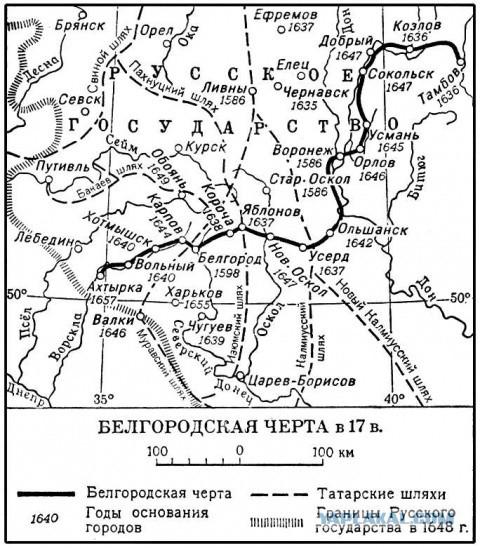
The system of fortifications stretching from the Dnieper River to the Volga River, was built in the 1630s, a little later the Great Troubles, to repel the raids of Crimean Tatars and Nogai. Initially, these lands were just standing military camp and went constantly patrolling the Wild Field, but later began the construction of a regular line of fortifications.

Our magistrates did not have the manpower reserve, which was the Chinese emperor, and thus build a solid stone wall length of 2000 kilometers opportunities had. However, this was not necessary - it was enough just to cast a mount such kurtizny, which could not have come up across the horse: this obstacle has stopped Tatar cavalry. According to the propeller shaft was a wooden palisade wall, and every 50-100 meters were wooden tower height of about 20 meters. Garrisons were placed in numerous (around 40) camps that were established along the shaft: Belgorod, Stary Oskol, Novy Oskol, Kozlov (Michurinsk), Tambov, etc. The whole system of fortifications Features proved very effective for its time. One of the most well preserved sites of the shaft is located on the western outskirts of Tambov. Tambochane call these strengthening Tatar shaft, when in fact it is, of course, anti-Tatar. Detail of a shaft runs parallel to the river from the village Tsna Kuzmina Gat to the village of Bald Mountain at 42 kilometers. Closest to the Tambov fragment is on the road to the village Krasnosvobodnoe, 7 kilometers from the outskirts of town and 3 from the outskirts of the village. Just to keep in mind that the buses going in Krasnosvobodnoe, stops at the request do not - it's not the Russian North ...
From Krasnosvobodnogo I walked three kilometers, admiring the scenery here is so:

...

...

I got here in the right season - and saw the "real" black earth, black earth endless field ...

The shaft on both sides of the road stretches somewhere in infinity. With the "Russian" party - a plowed field Chernozemnoe with "Tartar" - meadow. Val overgrown red high grass, and reminds of a living creature - something long and hairy.

At the beginning of the tree - a memorial stone. Close to it came from the few locals, but if you believe the forums, all wondered why suddenly Tambov shaft, rather than Tatar.

Comb shaft

Right Russ, left Wild Field.
Since shaft looks with the "Russian party»:

So - with the "Tatar" in which he reinforced by a moat.
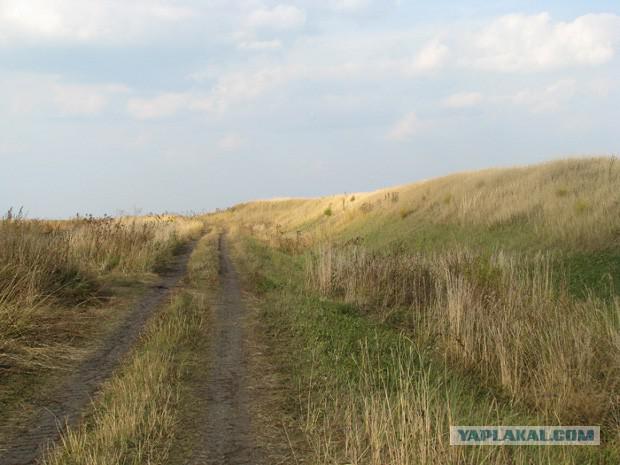
Although the shaft is very oplyl (its original height was about 5 meters, now in human height), its slopes are quite steep. Get on it in a straight line, do not zigzag, and now a man is difficult - to say nothing about the horse 300 years ago.
Walking along the shaft, can distinguish the remains of the towers, made by forward in the Tatar side. They are located so that each is only visible from the adjacent, at an equal distance from each other.
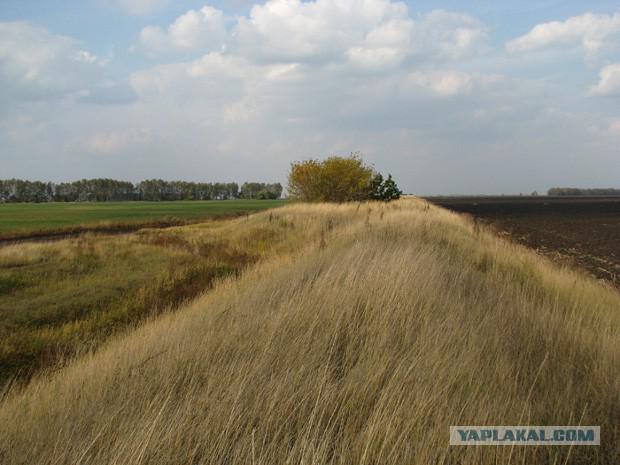
...

Standing near Tambov - initially only part of the fortifications, now forgotten and abandoned. However, waved shaft stems leave a lasting impression:

A Chernozemnoe field to the horizon could be the perfect illustration to some fantasy or kosmoopery:

In the field of visible Tambov, where in the 17th century lived the archers and horsemen guarding the shaft.
In the Tatar side shaft runs parallel to the country road embankment, which struck me unspeakably color.

The very same tree leaves on both sides of the road farther than the eye can see:

Tambov shaft portion - most of the surviving large and authentic. In general, the shaft sections of chernozem preserved many, and Moksha shaft in the village near Penza Mokshan rukonstruirovannym remarkable fragment of the fortifications (tower and stockade) portion of the shaft in the village of Canada Ulyanovsk region - a stone tower 17c., And Ulyanovsk recreated a fragment of a wooden fortress. Val actively studied by scientists, and is, in fact, one of the unique objects of our cultural heritage.
Finally - miraculously survived a slice of the Wild Fields among cultivated fields:
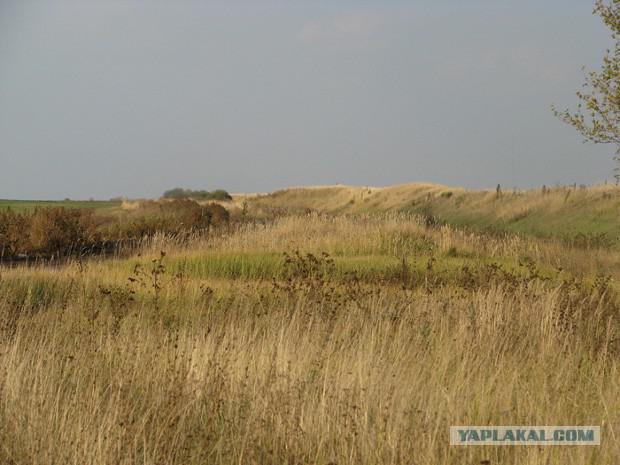

The system of fortifications stretching from the Dnieper River to the Volga River, was built in the 1630s, a little later the Great Troubles, to repel the raids of Crimean Tatars and Nogai. Initially, these lands were just standing military camp and went constantly patrolling the Wild Field, but later began the construction of a regular line of fortifications.

Our magistrates did not have the manpower reserve, which was the Chinese emperor, and thus build a solid stone wall length of 2000 kilometers opportunities had. However, this was not necessary - it was enough just to cast a mount such kurtizny, which could not have come up across the horse: this obstacle has stopped Tatar cavalry. According to the propeller shaft was a wooden palisade wall, and every 50-100 meters were wooden tower height of about 20 meters. Garrisons were placed in numerous (around 40) camps that were established along the shaft: Belgorod, Stary Oskol, Novy Oskol, Kozlov (Michurinsk), Tambov, etc. The whole system of fortifications Features proved very effective for its time. One of the most well preserved sites of the shaft is located on the western outskirts of Tambov. Tambochane call these strengthening Tatar shaft, when in fact it is, of course, anti-Tatar. Detail of a shaft runs parallel to the river from the village Tsna Kuzmina Gat to the village of Bald Mountain at 42 kilometers. Closest to the Tambov fragment is on the road to the village Krasnosvobodnoe, 7 kilometers from the outskirts of town and 3 from the outskirts of the village. Just to keep in mind that the buses going in Krasnosvobodnoe, stops at the request do not - it's not the Russian North ...
From Krasnosvobodnogo I walked three kilometers, admiring the scenery here is so:

...

...

I got here in the right season - and saw the "real" black earth, black earth endless field ...

The shaft on both sides of the road stretches somewhere in infinity. With the "Russian" party - a plowed field Chernozemnoe with "Tartar" - meadow. Val overgrown red high grass, and reminds of a living creature - something long and hairy.

At the beginning of the tree - a memorial stone. Close to it came from the few locals, but if you believe the forums, all wondered why suddenly Tambov shaft, rather than Tatar.

Comb shaft

Right Russ, left Wild Field.
Since shaft looks with the "Russian party»:

So - with the "Tatar" in which he reinforced by a moat.

Although the shaft is very oplyl (its original height was about 5 meters, now in human height), its slopes are quite steep. Get on it in a straight line, do not zigzag, and now a man is difficult - to say nothing about the horse 300 years ago.
Walking along the shaft, can distinguish the remains of the towers, made by forward in the Tatar side. They are located so that each is only visible from the adjacent, at an equal distance from each other.

...

Standing near Tambov - initially only part of the fortifications, now forgotten and abandoned. However, waved shaft stems leave a lasting impression:

A Chernozemnoe field to the horizon could be the perfect illustration to some fantasy or kosmoopery:

In the field of visible Tambov, where in the 17th century lived the archers and horsemen guarding the shaft.
In the Tatar side shaft runs parallel to the country road embankment, which struck me unspeakably color.

The very same tree leaves on both sides of the road farther than the eye can see:

Tambov shaft portion - most of the surviving large and authentic. In general, the shaft sections of chernozem preserved many, and Moksha shaft in the village near Penza Mokshan rukonstruirovannym remarkable fragment of the fortifications (tower and stockade) portion of the shaft in the village of Canada Ulyanovsk region - a stone tower 17c., And Ulyanovsk recreated a fragment of a wooden fortress. Val actively studied by scientists, and is, in fact, one of the unique objects of our cultural heritage.
Finally - miraculously survived a slice of the Wild Fields among cultivated fields:










